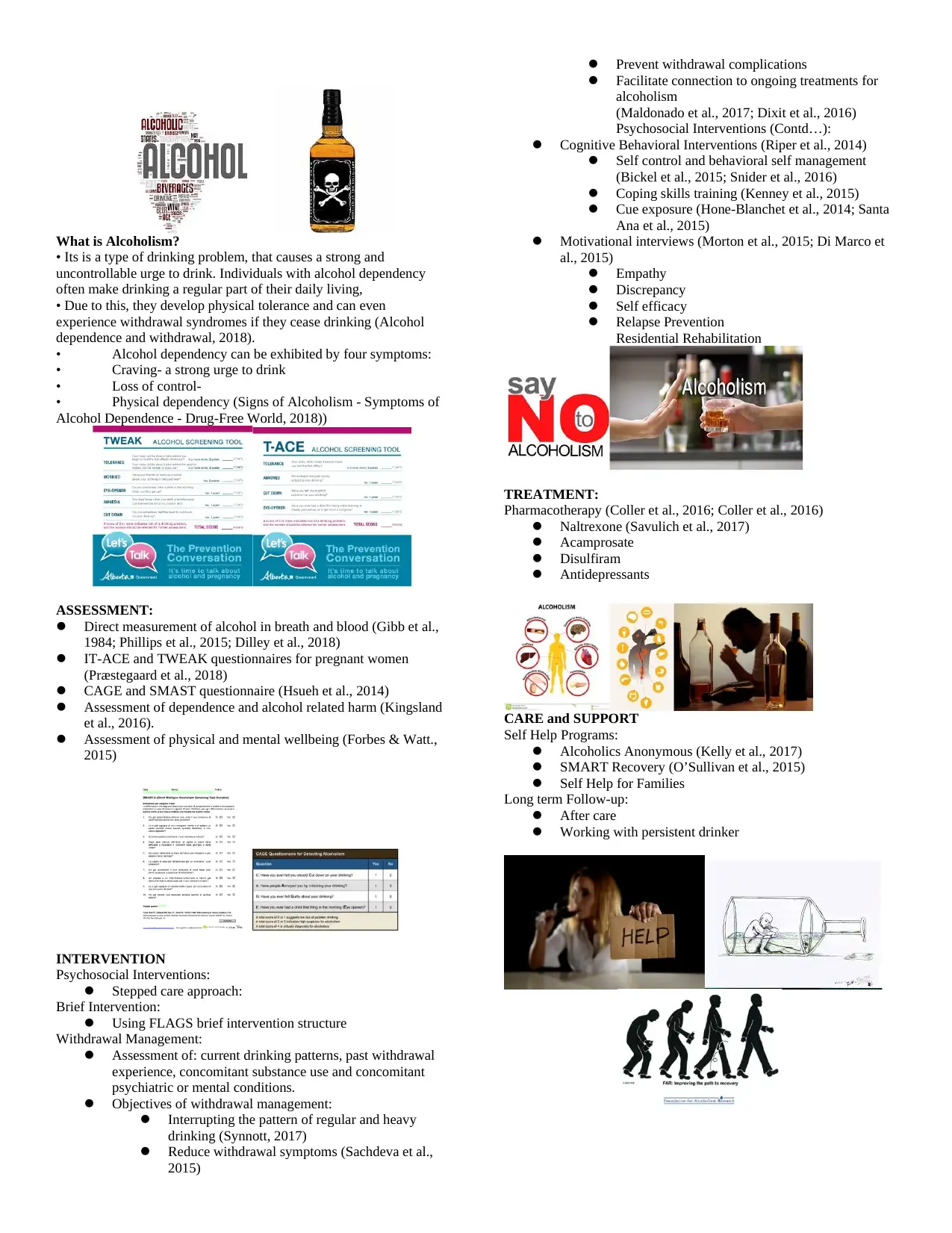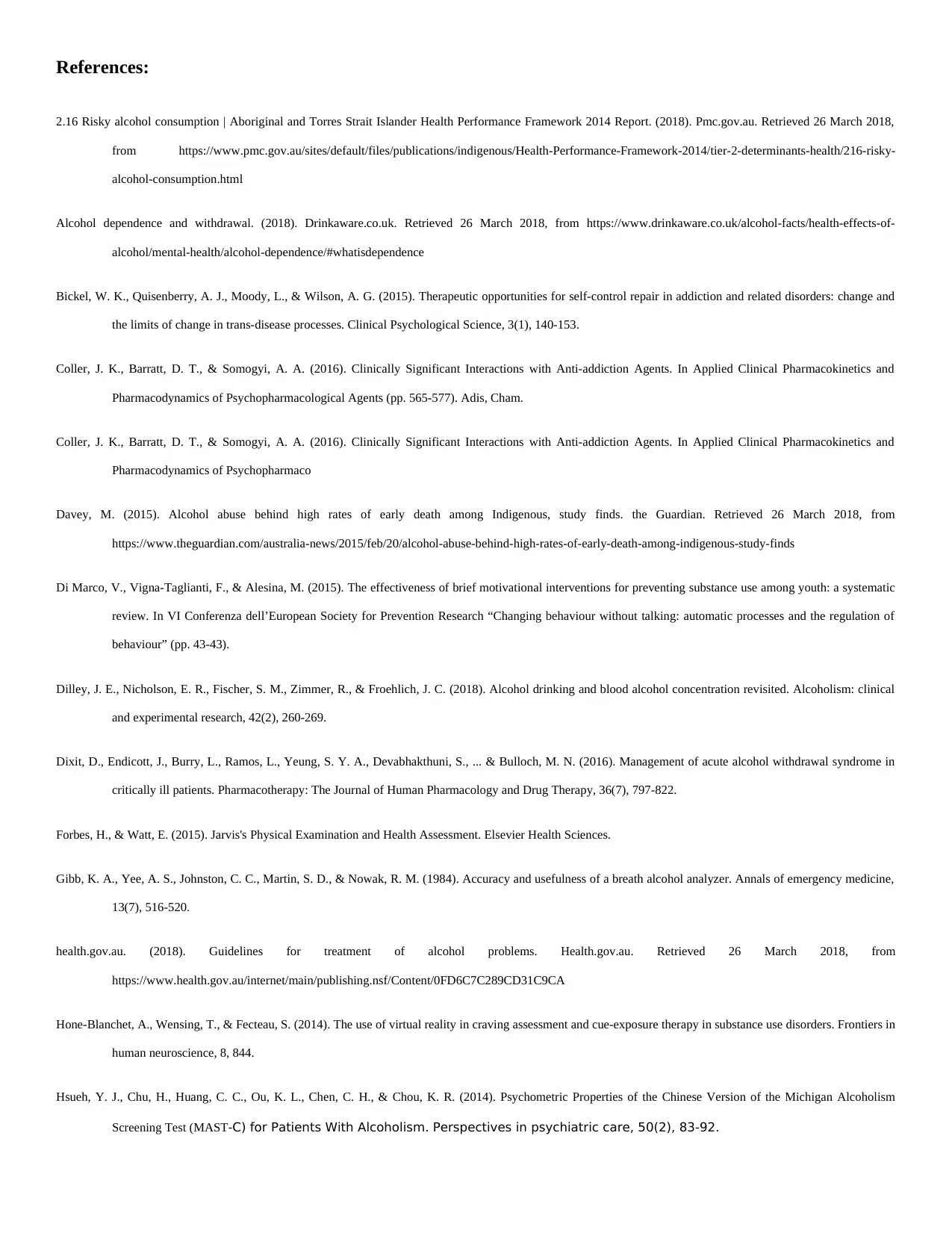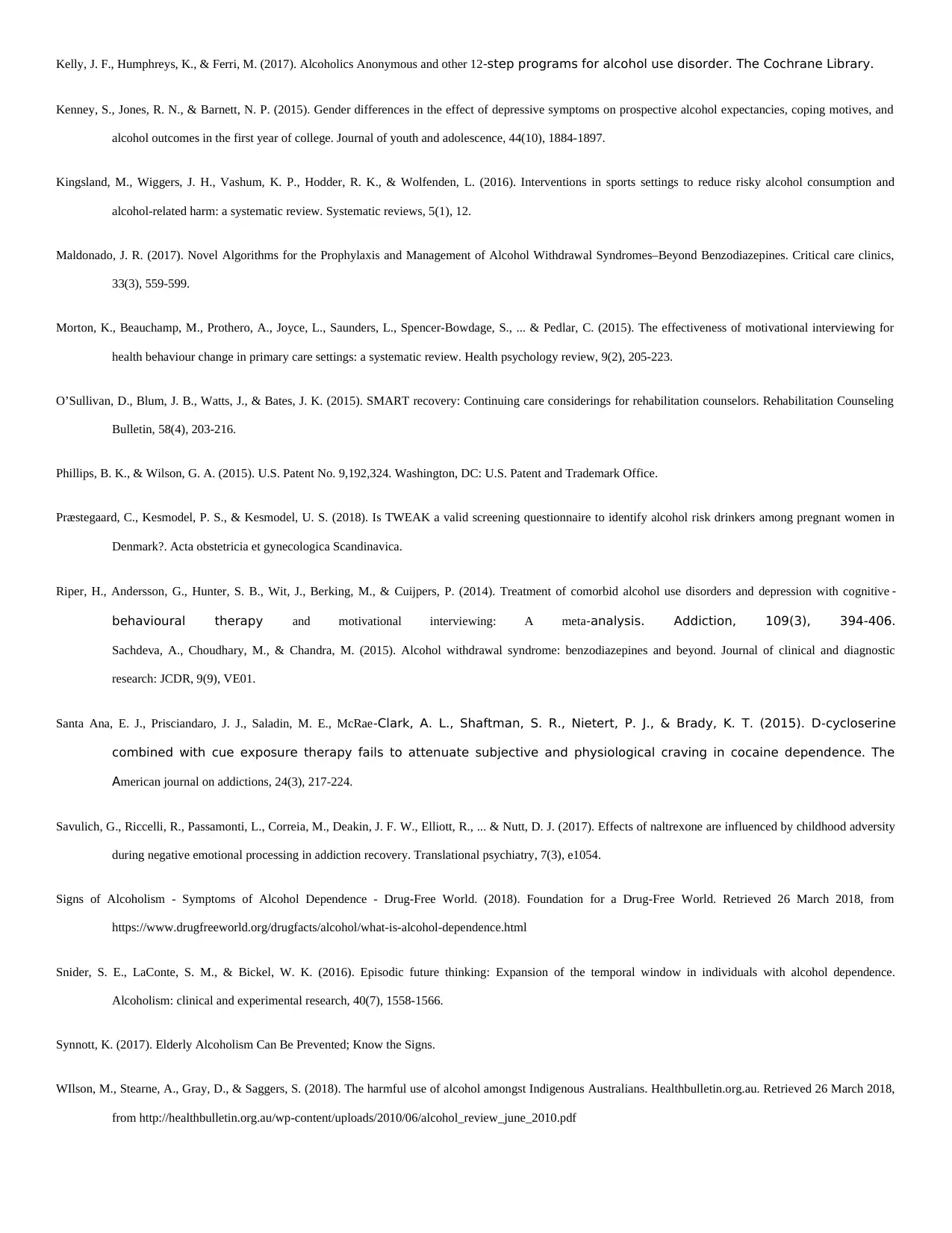This assignment requires a systematic review of existing literature on reducing risky alcohol consumption and related harm. It involves analyzing published research papers, including those by Maldonado (2017), Morton et al. (2015), O'Sullivan et al. (2015), Phillips and Wilson (2015), Præstegaard et al. (2018), Riper et al. (2014), Sachdeva et al. (2015), Santa Ana et al. (2015), Savulich et al. (2017), Signs of Alcoholism - Symptoms of Alcohol Dependence - Drug-Free World (2018), Snider et al. (2016), Synnott (2017), and Wilson et al. (2018). The review aims to identify effective methods for managing alcohol withdrawal syndromes, treating comorbid alcohol use disorders and depression, and preventing elderly alcoholism among Indigenous Australians.
![[object Object]](/_next/static/media/star-bottom.7253800d.svg)
![[object Object]](/_next/static/media/star-bottom.7253800d.svg)


